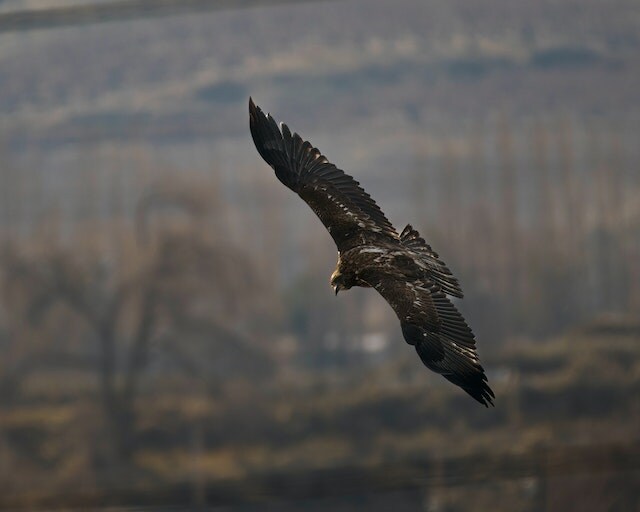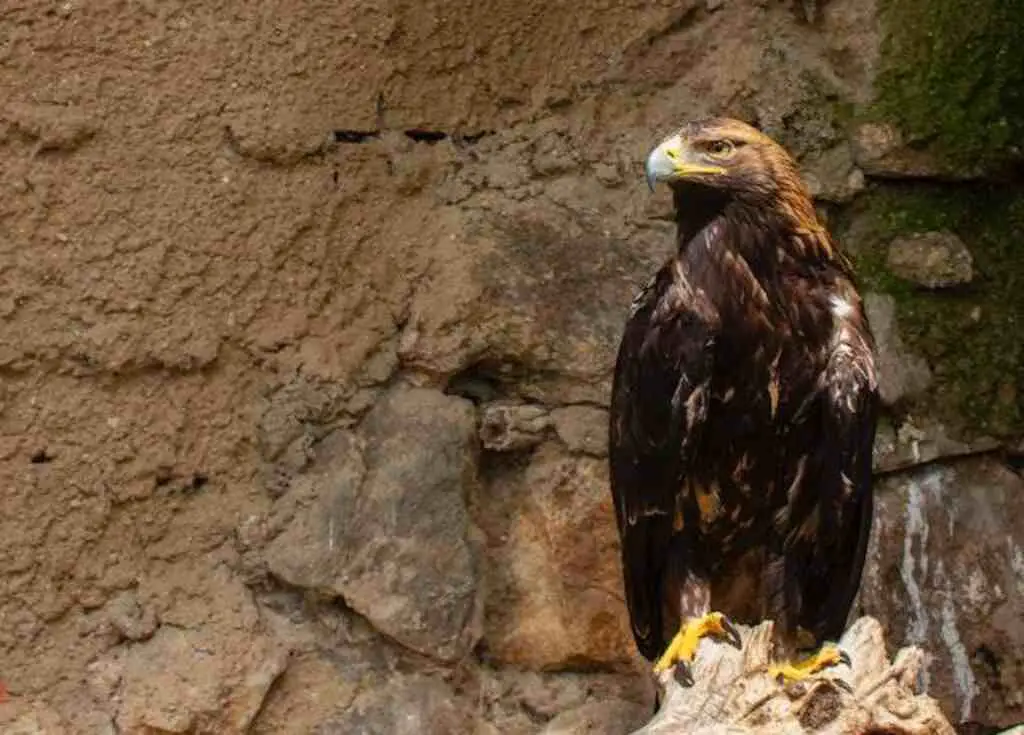When the first rays of the sun break through the horizon, a majestic creature awakens from its slumber. Eagles, renowned for their awe-inspiring beauty and remarkable abilities, possess a sleeping pattern that has intrigued scientists and nature enthusiasts alike. But, when do eagles wake up?
Understanding the waking habits of these magnificent birds is essential to appreciating their role in the ecosystem and addressing their conservation needs.
This article delves into the enigmatic morning routine of eagles, exploring the factors that influence their wake-up time and the fascinating behaviors they exhibit during this period.
Prepare to embark on a journey through the intriguing world of eagle wakefulness, where nature’s freedom is both celebrated and safeguarded.
Table of Contents
- 1 Key Takeaways
- 2 When Do Eagles Wake Up
- 3 The Sleeping Habits of Eagles
- 4 Sunrise and Eagle Activity
- 5 Roosting and Nesting Behavior
- 6 Factors Influencing Wake-Up Time
- 7 The Role of Circadian Rhythms
- 8 Communication among Eagles
- 9 Eaglets’ Wake-Up Time
- 10 Human Interactions with Eagles
- 11 Conservation and Protection
- 12 Fascinating Facts about Eagles
- 13 Conclusion: The Enigmatic Morning Routine of Eagles
- 14 Frequently Asked Questions
- 14.1 How many hours do eagles typically sleep during the night?
- 14.2 Do eagles have a preferred sleeping position?
- 14.3 What are some factors that can disrupt an eagle’s sleep?
- 14.4 How do eagles communicate with each other while they are sleeping?
- 14.5 Are there any specific conservation measures in place to protect eagles during their sleeping hours?
- 15 Author
Key Takeaways
- Eagles wake up shortly before sunrise to take advantage of optimal lighting conditions for hunting and navigation.
- Environmental conditions and prey availability can influence the wake-up time of eagles.
- Seasonal variations can also affect eagles’ wake-up time.
- Circadian rhythms play a crucial role in regulating the sleep-wake cycles of eagles.

When Do Eagles Wake Up
Eagles typically wake up at the break of dawn, shortly after the first rays of the sun appear on the horizon. Their innate circadian rhythms and sensitivity to external stimuli influence their waking time.
Understanding their morning routine provides valuable insights into their role in the ecosystem and the need for conservation efforts.
By waking early, eagles maximize their hunting opportunities and engage in essential behaviors for survival.
Observing their wakefulness sheds light on the intriguing world of these majestic birds, inspiring admiration for nature’s delicate balance.
The Sleeping Habits of Eagles
The sleeping habits of eagles are governed by their natural circadian rhythm, causing them to wake up at the first light of dawn.
Eagles have evolved to be diurnal creatures, meaning they are most active during the day and rest during the night. This behavior is closely linked to their reliance on daylight for hunting and foraging.
The timing of sunrise plays a crucial role in regulating the sleep patterns of eagles. In different climates, eagles may adjust their sleeping schedule accordingly.
For instance, in regions where the duration of daylight varies throughout the year, eagles may wake up earlier or later to maximize their hunting opportunities.
Understanding the relationship between sunrise and eagle activity provides valuable insights into the behavior and ecology of these majestic birds.
Sunrise and Eagle Activity
At the crack of dawn, as the sun’s rays creep over the horizon, the majestic eagles emerge from their slumber, ready to conquer the skies with their unyielding grace and unrivaled prowess.
Sunrise observations and bird behavior research have shed light on the awakening habits of eagles.
It has been observed that eagles typically wake up shortly before sunrise, a time when the environment starts to brighten and become more active.
This is believed to be an adaptive behavior that allows eagles to take advantage of the optimal lighting conditions for hunting and navigation.
As the first rays of sunlight touch the earth, eagles become more active, preparing themselves for the day ahead.
With their keen eyesight and powerful wings, they soar through the sky, scanning the landscape for prey.
This transition from slumber to activity sets the stage for exploring the fascinating roosting and nesting behavior of eagles.

Roosting and Nesting Behavior
Eagles demonstrate a distinct selection process when choosing roosting sites, displaying a preference for tall trees or cliffs that offer a vantage point.
These sites provide a strategic advantage for spotting potential prey and monitoring their surroundings.
Additionally, eagles exhibit remarkable nest-building and maintenance behavior, constructing large and sturdy nests using materials such as twigs, grass, and moss, which are reinforced and repaired annually.
This meticulous attention to their nests ensures a safe and secure environment for raising their offspring.
Eagles’ Selection of Roosting Sites
One important aspect to consider when studying the selection of roosting sites by eagles is the specific time at which they wake up.
Eagles are diurnal birds, meaning they are active during the day and sleep at night. As such, they typically wake up at dawn, just before sunrise, to begin their daily activities.
When choosing roosting sites, eagles exhibit certain preferences that contribute to their overall survival and reproductive success. These preferences include:
- High vantage points: Eagles tend to select roosting sites that offer a wide field of view, allowing them to spot potential threats or prey from a distance.
- Protection from the elements: Eagles often choose roosting sites that provide shelter from harsh weather conditions, such as strong winds or heavy rain.
- Proximity to food sources: Eagles prefer roosting sites that are close to their hunting grounds, ensuring easy access to their primary food source.
Understanding the selection of roosting sites is crucial in comprehending the ecological requirements and behavior of eagles.
Transitioning into the subsequent section about ‘nest building and maintenance,’ it is important to delve into the intricate nesting habits of these magnificent birds.
Nest Building and Maintenance
During the process of nest building and maintenance, eagles demonstrate remarkable skill and resourcefulness in constructing sturdy structures that provide a secure environment for their offspring.
Nest building is primarily conducted by the female eagle, who uses various materials such as sticks, twigs, and moss to create a solid foundation.
The nest is then lined with softer materials like grass and feathers to provide comfort.
Eagle activity during nest building is typically observed during the breeding season, when the pair is reinforcing or repairing their existing nest.
The male eagle also contributes by gathering materials and bringing them to the female at the nest site. This collaborative effort ensures the nest’s structural integrity and promotes successful reproduction.
Transitioning to the subsequent section about factors influencing wake-up time, the construction and maintenance of the nest play a crucial role in the eagles’ daily routines.

Factors Influencing Wake-Up Time
Factors such as environmental conditions and seasonal variations can significantly influence the wake-up time of eagles. The following are three key factors affecting the sleep patterns and wake-up time of eagles:
- Weather conditions: Adverse weather conditions like heavy rain, strong winds, or extreme temperatures can delay an eagle’s wake-up time. Eagles may choose to remain in their nests until the weather improves for better hunting and flying conditions.
- Availability of prey: The presence and availability of prey can also impact the wake-up time of eagles. If there is a scarcity of prey in their hunting grounds, eagles may wake up earlier to maximize their chances of finding food.
- Seasonal variations: Eagles may adjust their wake-up time based on the changing seasons. During the breeding season, eagles may wake up earlier to engage in courtship and reproductive activities.
Understanding these factors helps us comprehend the intricate relationship between eagles and their environment.
Transitioning to the subsequent section, the role of circadian rhythms plays a crucial role in influencing eagles’ sleep-wake cycles.
The Role of Circadian Rhythms
Circadian rhythms play a crucial role in regulating the sleep-wake cycles of eagles, highlighting the significance of internal biological processes in determining their daily activity patterns.
Research on circadian rhythms has shown that these internal biological clocks are responsible for synchronizing various physiological and behavioral processes, including sleep, in response to environmental cues.
In the case of eagles, these internal clocks are influenced by factors such as light and darkness, which are essential for maintaining their sleep-wake patterns.
However, the increasing presence of artificial light, particularly at night, can disrupt these natural rhythms and affect the sleep patterns of eagles.
Studies have shown that exposure to artificial light at night can alter their sleep duration and quality, leading to potential negative consequences for their overall health and well-being.
Understanding the impact of artificial light on sleep patterns is crucial for conservation efforts aimed at protecting the natural behavior and physiology of eagles.
Transitioning to the subsequent section about ‘communication among eagles’, it is important to explore how their sleep-wake cycles may influence their ability to communicate effectively.

Communication among Eagles
Communication among eagles is as essential as the wind whispering through the trees, enabling them to convey information and establish social connections within their species.
Eagles have developed a complex system of communication signals that allows them to communicate with each other over long distances.
These signals include vocalizations, such as screeches and calls, as well as visual displays, such as wing flapping and head bobbing.
Through these signals, eagles can communicate their intentions, such as marking territory or warning others of potential threats.
Additionally, communication among eagles plays a crucial role in their hunting strategies.
By coordinating their movements and sharing information about prey locations, eagles can increase their chances of successful hunting.
Understanding the intricate communication system of eagles provides valuable insights into their behavior and social dynamics.
Transitioning into the subsequent section about ‘eaglets’ wake-up time’, it is important to investigate how these communication strategies are utilized in the context of eaglet development.
Eaglets’ Wake-Up Time
The waking patterns of eaglets, during their early developmental stages, are influenced by a variety of environmental cues and internal biological processes.
Eaglets’ sleep patterns go through distinct changes as they grow. In the first few weeks of their lives, eaglets spend most of their time sleeping, with brief periods of wakefulness for feeding.
As they grow older, their sleep patterns gradually shift, and they start to spend more time awake and active during the day.
This change in sleep patterns is closely linked to their growth stages, as eaglets need more energy and nutrients to support their rapid development.
These waking patterns in eaglets allow them to interact with their environment, learn essential skills, and prepare for their eventual independence.
Transitioning into the subsequent section about human interactions with eagles, it is important to understand how these natural sleep patterns may be affected.
Human Interactions with Eagles
Human presence in the environment where eagles live can disrupt the delicate balance of their natural habitat, potentially causing unintended consequences for the eagles’ daily routines and behaviors.
This interference can be a result of various human activities such as construction, recreational activities, or even deliberate disturbances.
Here are five ways in which human interactions can impact eagles:
- Noise pollution from human activities can disturb the eagles’ sensitive hearing and communication.
- Direct human contact, such as feeding or approaching eagles, can disrupt their natural foraging and social behaviors.
- The human animal bond, while well-intentioned, can lead to eagles becoming habituated to human presence, which can be detrimental to their survival in the wild.
- Eagle rehabilitation programs aim to rescue and rehabilitate injured or orphaned eagles, but the process of human intervention can alter their natural behaviors and ability to adapt to the wild.
- Human disturbances near eagle nests can lead to nest abandonment or decreased breeding success.
Understanding the potential impact of human interactions with eagles is crucial for their conservation and protection.

Conservation and Protection
The conservation and protection of eagle populations involves addressing various threats that they face and implementing efforts to preserve their habitats.
Threats to eagle populations include habitat loss due to human activities such as deforestation and urbanization, as well as pollution, hunting, and collision with power lines.
Efforts to preserve eagle habitats focus on creating protected areas, implementing conservation plans, promoting sustainable land use practices, and raising public awareness about the importance of eagle conservation.
These initiatives aim to ensure the long-term survival of eagle populations and the maintenance of healthy ecosystems that support their existence.
Threats to Eagle Populations
Anthropogenic factors pose significant risks to the survival of eagle populations. These factors have led to a decline in eagle populations and have had significant environmental impacts. Here are three key threats that eagle populations face:
- Habitat loss: Due to urbanization, industrialization, and deforestation, the natural habitats of eagles are being destroyed. This loss of habitat limits their ability to find suitable nesting sites and prey, ultimately impacting their survival.
- Pollution: The release of pollutants into the environment has had detrimental effects on eagles. Contaminated food sources, such as fish and small mammals, can lead to reduced reproductive success and overall health decline in eagles.
- Human disturbance: Activities such as recreational boating, hiking, and photography can disturb eagles and disrupt their nesting and feeding behaviors. This disturbance can cause stress, abandonment of nests, and even injury or death of eagles.
Efforts to preserve eagle habitats and address these threats are crucial for the long-term survival of these majestic birds.
Efforts to Preserve Eagle Habitats
Efforts to preserve eagle habitats are crucial in ensuring the long-term survival of these majestic birds. The destruction and degradation of their habitats pose a significant threat to eagle populations worldwide.
To counteract this, various conservation organizations and government agencies have implemented measures to protect and restore eagle habitats.
These efforts include establishing protected areas, implementing habitat restoration projects, and monitoring the environmental impact of human activities on eagle habitats.
For example, strict regulations have been put in place to limit logging and mining activities in critical eagle habitats.
Additionally, efforts are being made to reduce pollution and prevent the destruction of nesting sites.
By preserving and restoring eagle habitats, we can safeguard the ecological balance and ensure the continued existence of these remarkable creatures.
Transitioning into the subsequent section about ‘fascinating facts about eagles,’ it is important to understand the significance of these efforts in order to appreciate the intriguing aspects of their lives.

Fascinating Facts about Eagles
Eagles are known to have a wingspan that can reach up to eight feet, allowing them to soar through the sky with remarkable grace and power.
These majestic birds of prey possess a number of fascinating characteristics and behaviors that captivate the imagination.
Eagle hunting techniques are a prime example of their incredible adaptability and resourcefulness.
These birds employ various strategies, such as aerial dives and surprise attacks, to capture their prey with utmost precision and efficiency.
Additionally, eagle courtship rituals showcase their intricate mating behaviors, involving intricate flight displays and vocalizations to attract a suitable partner.
| Grace | 🦅 |
| Power | 🦅 |
| Majesty | 🦅 |
| Beauty | 🦅 |
These keywords encompass the awe-inspiring qualities that eagles possess. In conclusion, the enigmatic morning routine of eagles remains a fascinating subject, which will be explored further in the subsequent section.
Conclusion: The Enigmatic Morning Routine of Eagles
The mysterious and captivating morning routine of these majestic creatures unfolds with an air of intrigue and mystique, leaving us in awe of their enigmatic nature.
Eagles, like many other birds, have distinct sleep patterns and daily habits that contribute to their survival and success in the wild.
These birds are diurnal, which means they are most active during the day and sleep at night.
Eagles typically wake up at the crack of dawn, when the first rays of sunlight hit their nesting sites.
They start their day by preening their feathers, stretching their wings, and engaging in social interactions with their fellow eagles.
After their morning rituals, they set out to hunt for food, using their keen eyesight and powerful talons to catch prey.
The morning routine of eagles is a testament to their adaptability and resourcefulness, allowing them to thrive in their natural habitats.

Frequently Asked Questions
How many hours do eagles typically sleep during the night?
Eagles typically sleep for around 5-6 hours during the night. Understanding their sleep patterns is crucial as sleep deprivation can have detrimental effects on their overall well-being and performance.
Do eagles have a preferred sleeping position?
Eagles do not have a preferred sleeping position, as they can sleep in various positions such as perched, standing, or even while flying. Their sleep duration during the night is typically around 4-8 hours.
What are some factors that can disrupt an eagle’s sleep?
Factors affecting eagle sleep include noise pollution, disturbance from human activities, presence of predators, weather conditions, and availability of food. Noise pollution can have a significant impact on eagle sleep, disrupting their resting patterns and overall well-being.
How do eagles communicate with each other while they are sleeping?
Eagles communicate with each other while sleeping through vocalizations and body language. Their sleep patterns and cycles are influenced by external factors such as daylight, temperature, and predation risks.
Are there any specific conservation measures in place to protect eagles during their sleeping hours?
Conservation efforts for eagles during their sleeping hours involve minimizing human disturbance, protecting nesting sites, and implementing regulations to prevent habitat destruction. Understanding their nocturnal behavior is crucial in formulating effective conservation strategies.


